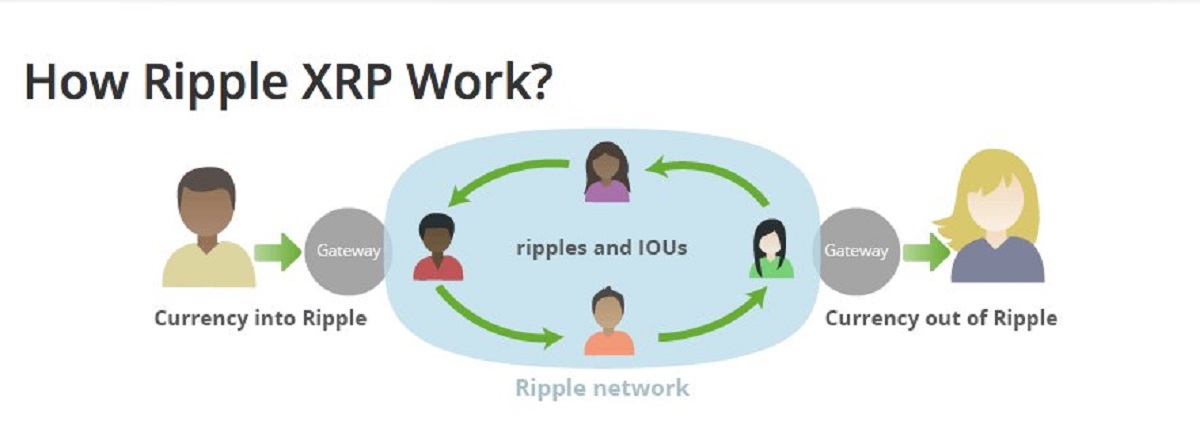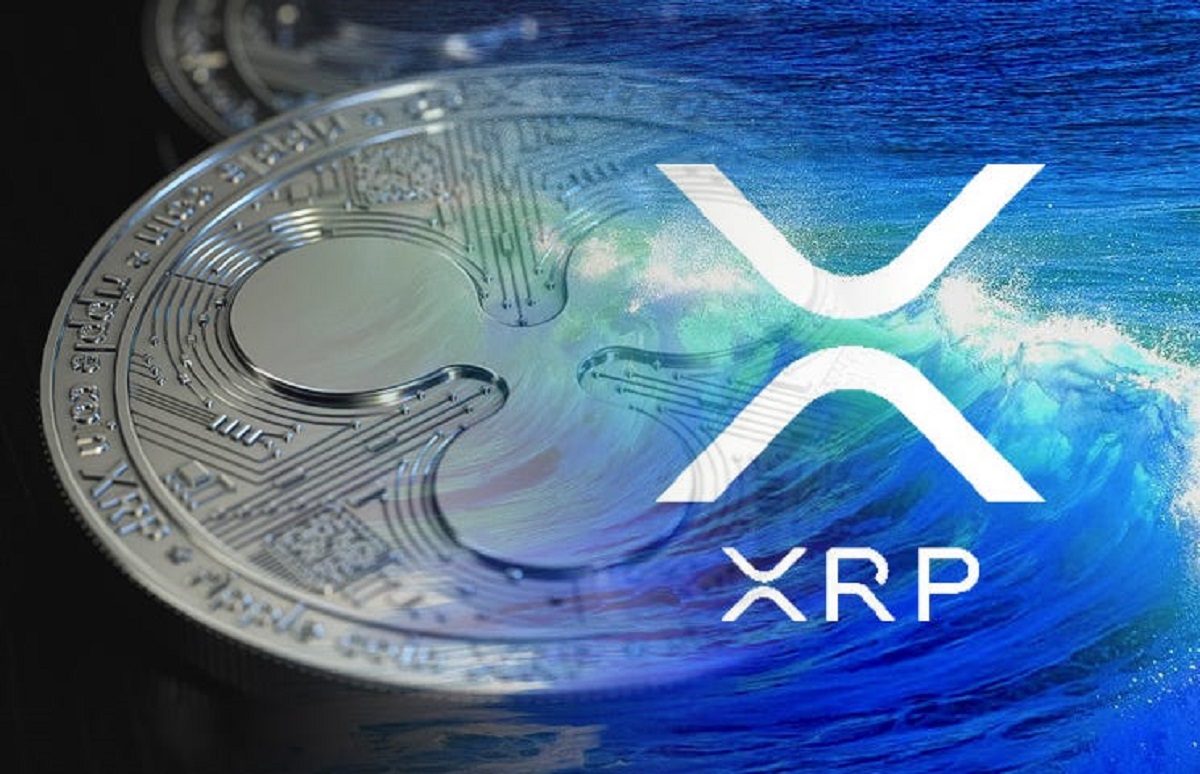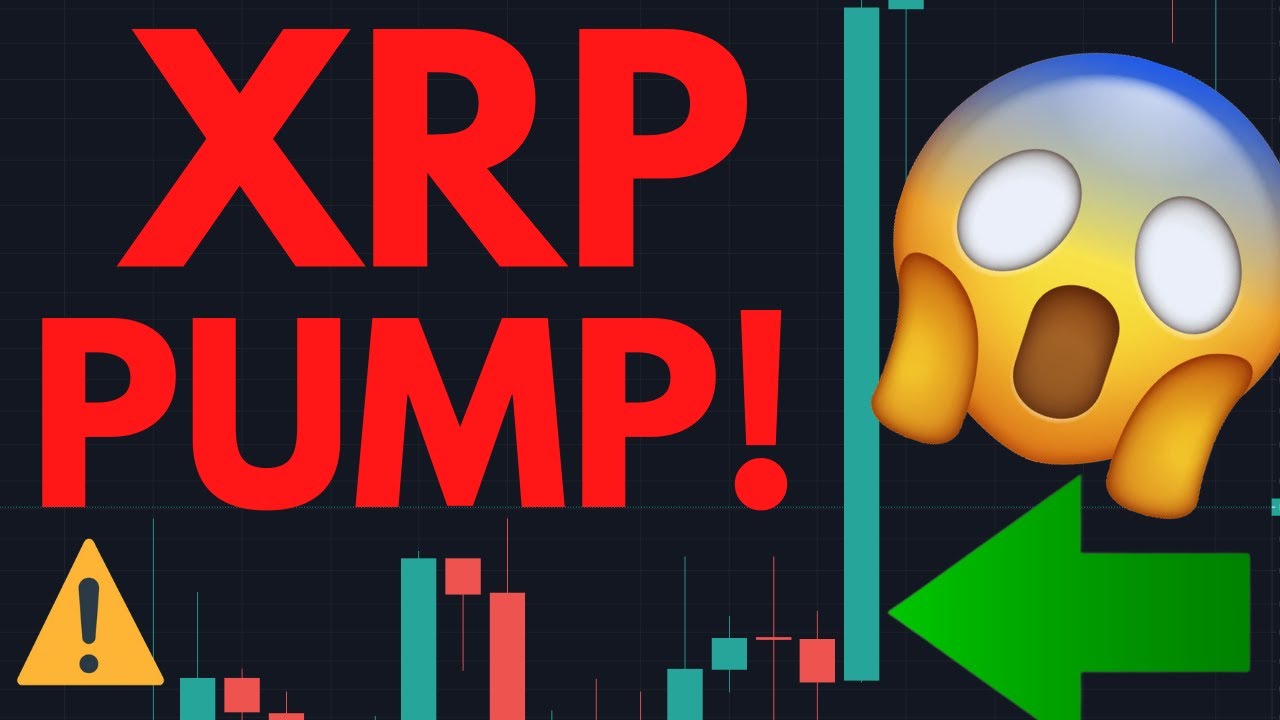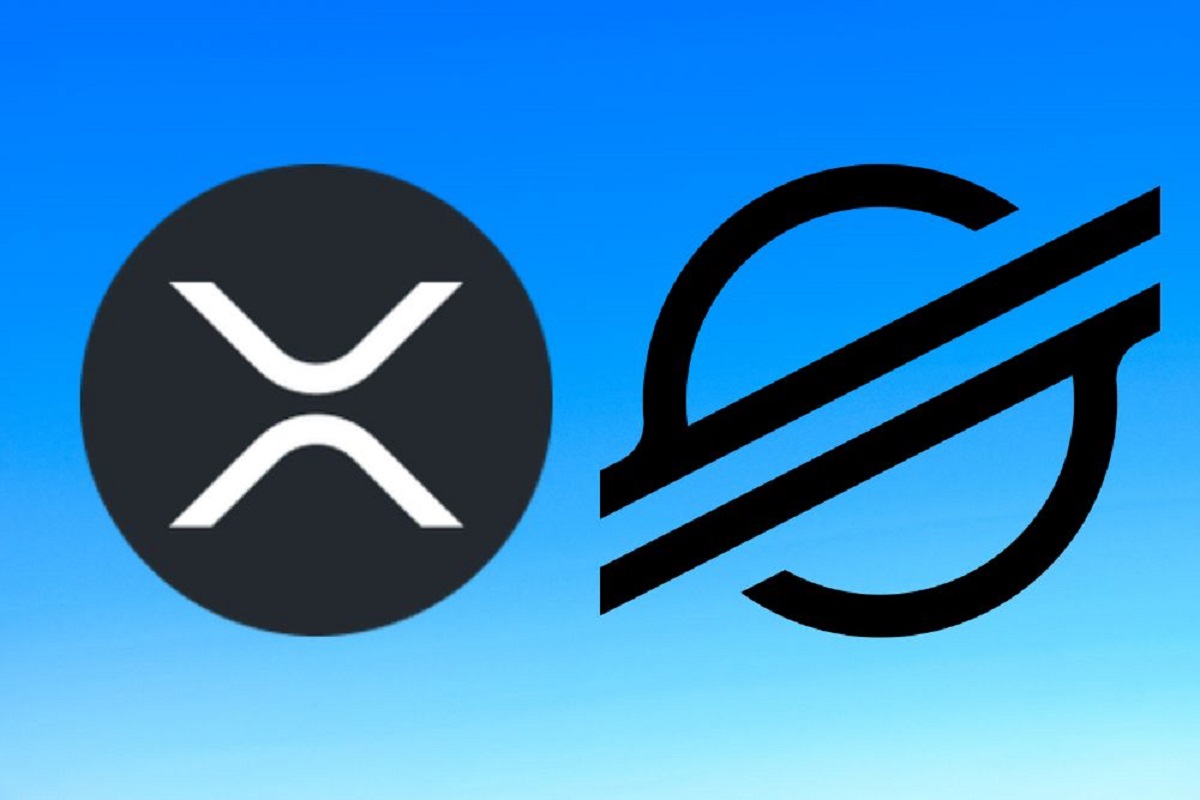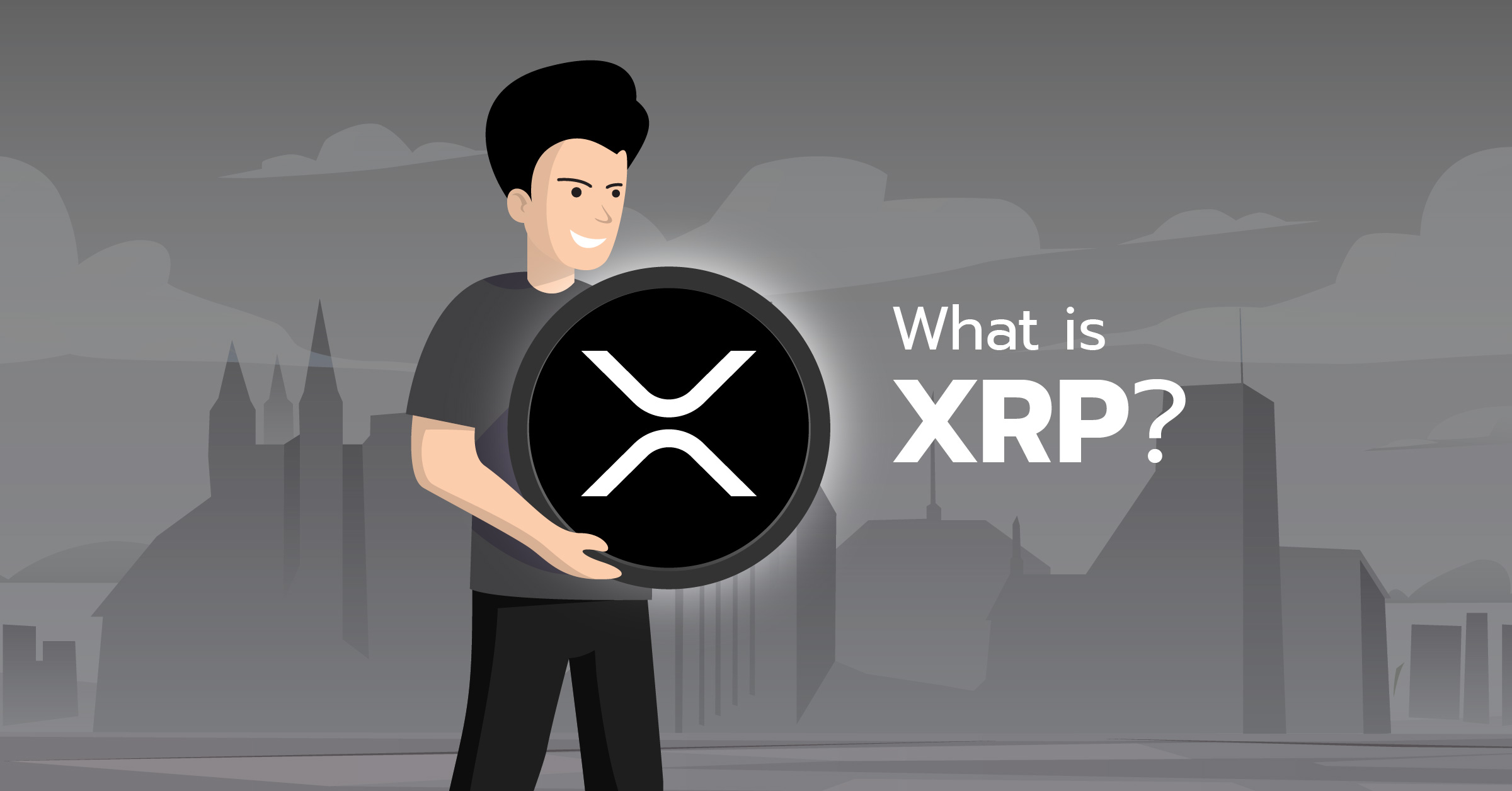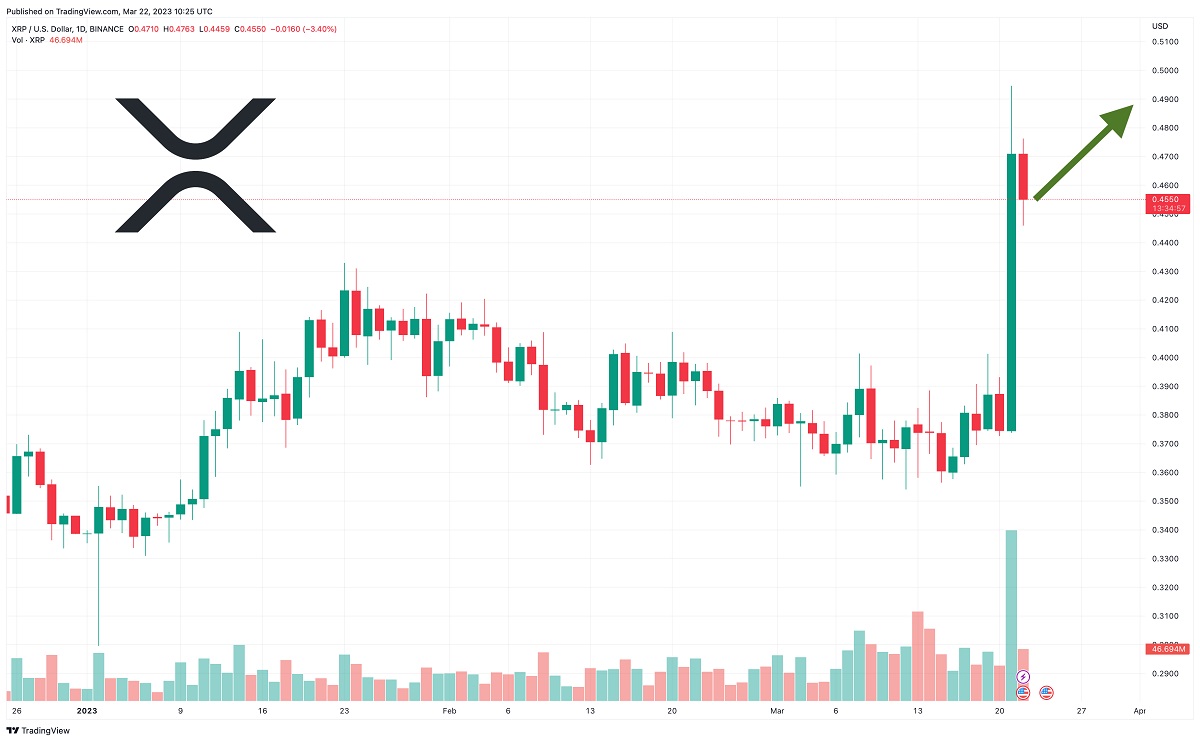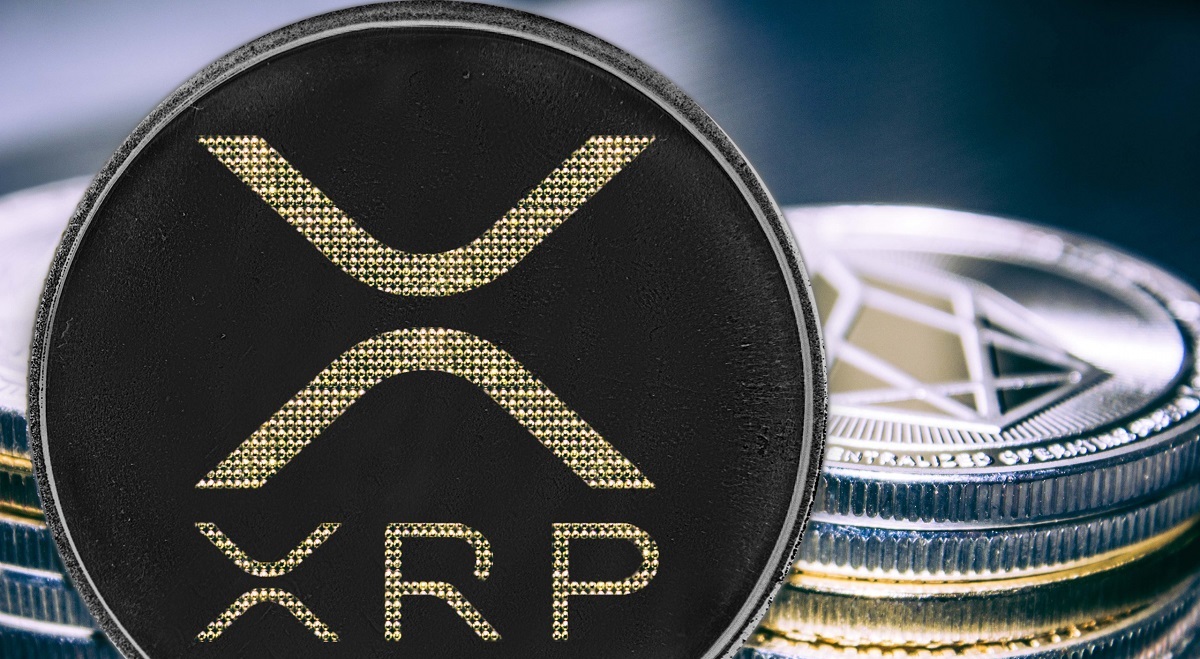Introduction
Ripple XRP is a digital asset and cryptocurrency that has gained significant attention in the world of finance and technology. Introduced in 2012 by Ripple Labs, it offers a unique and innovative solution for facilitating fast and low-cost international money transfers. As a decentralized blockchain platform, Ripple XRP provides a secure and efficient way to exchange value without the need for intermediaries or traditional banking systems.
Unlike other cryptocurrencies like Bitcoin, which primarily focus on being a decentralized store of value, Ripple XRP is designed to be a practical payment solution for financial institutions and individuals. Its main goal is to enable seamless cross-border transactions by leveraging the power of blockchain technology and its native token, XRP.
The rise of Ripple XRP has been fueled by its ability to address the inefficiencies and complexities surrounding international money transfers. Traditional methods of sending money across borders often involve multiple intermediaries, high fees, and long transaction times. Ripple XRP aims to revolutionize this process by enabling near-instantaneous payments with minimal fees.
With its unique features and partnerships with various financial institutions worldwide, Ripple XRP has positioned itself as a leading player in the global payments industry. In this article, we will explore the basics of Ripple XRP, its underlying technology, its role in the Ripple network, and its potential benefits and challenges.
So let’s dive into the world of Ripple XRP and understand how this innovative cryptocurrency works, and the impact it is making on the financial landscape.
The Basics of Ripple XRP
Ripple XRP operates on a decentralized platform that uses a combination of blockchain technology and distributed ledger technology (DLT) to enable seamless cross-border transactions. Unlike Bitcoin and other cryptocurrencies, Ripple XRP does not rely on mining to generate new coins. Instead, all 100 billion XRP tokens were pre-mined at the inception of the network.
Ripple XRP’s consensus mechanism is different from the traditional proof-of-work (PoW) used by Bitcoin. It utilizes the Ripple Consensus Protocol (RCP), also known as the XRP Ledger Consensus Protocol, to validate and settle transactions on the network. This protocol ensures fast and efficient transactions by consensus agreement among a network of trusted validators, which include Ripple itself.
One of the key features of Ripple XRP is its ability to settle transactions in any currency with minimal fees and no foreign exchange risk. This is made possible through the use of gateways, which act as bridges between the Ripple network and traditional financial systems. These gateways facilitate the conversion of various currencies into XRP and vice versa, allowing for easy and seamless cross-border transfers.
Ripple XRP’s ledger, known as the XRP Ledger, keeps a record of all transactions and balances on the network. It is maintained by a network of independent validators who continuously verify and validate the transactions. This distributed ledger ensures the integrity and transparency of the network, making it secure and reliable for financial transactions.
Interoperability is another important aspect of Ripple XRP. It is built on the Interledger Protocol (ILP), which enables interoperability between different payment networks, both fiat-based and cryptocurrency-based. This means that Ripple XRP can facilitate transactions between different currencies and networks, making it a versatile and flexible payment solution.
Overall, the basics of Ripple XRP revolve around its innovative approach to cross-border transactions, its unique consensus protocol, and its interoperability with other payment networks. In the next section, we will delve deeper into the role of XRP within the Ripple network and how it enables seamless and efficient transactions.
The Ripple Consensus Protocol
The Ripple Consensus Protocol (RCP), also known as the XRP Ledger Consensus Protocol, is the underlying mechanism that powers the Ripple network and ensures the secure and efficient validation of transactions. Unlike Bitcoin’s proof-of-work (PoW) system, which requires miners to solve complex mathematical puzzles, RCP relies on a more streamlined and energy-efficient approach.
RCP operates on a consensus algorithm called the Byzantine Fault Tolerant consensus algorithm, or BFT. This algorithm allows a set of trusted validators to agree on the validity and ordering of transactions without relying on the computational power-intensive process of mining.
In the Ripple network, there are a total of 53 validator nodes that participate in the consensus process. These validators are chosen based on their reliability and adherence to the network’s guidelines. Ripple Labs, the creator of Ripple XRP, operates several of these validator nodes, but they are designed to operate independently and are not controlled solely by Ripple Labs. This decentralized network of validators ensures the security and integrity of the network.
The consensus protocol works as follows: when a transaction is initiated on the Ripple network, it is first propagated to the network’s validators. Each validator independently validates the transaction, checking for things like proper signature and available funds. The validators then propose transactions based on their analysis, and a round of voting takes place.
During the voting process, the validators evaluate the proposed transactions and cast their votes in favor or against them. To achieve consensus, a supermajority of at least 80% of the validator nodes must agree on the transaction’s validity and ordering. This ensures that the network reaches a deterministic agreement on transactions, enabling fast and secure settlement. Once consensus is reached, the transaction is included in the next ledger and becomes a permanent part of the XRP Ledger.
The use of RCP enables the Ripple network to achieve near-instantaneous transaction settlement, with an average confirmation time of just a few seconds. This makes it significantly faster than traditional banking systems, where international transfers can take days to complete.
In summary, the Ripple Consensus Protocol provides a streamlined and energy-efficient approach to transaction validation in the Ripple network. Through the use of a trusted network of validators and a Byzantine Fault Tolerant consensus algorithm, RCP ensures the security, integrity, and efficiency of transactions on the network.
The Role of XRP in Ripple
XRP, the native cryptocurrency of the Ripple network, plays a fundamental role in facilitating seamless and efficient transactions. It serves as a bridge currency and a liquidity tool that enables the quick and low-cost transfer of value between different fiat currencies.
The primary purpose of XRP is to act as a digital intermediary in the Ripple network. When a user initiates a transaction, XRP can be used to facilitate the transfer of value from one currency to another. For example, if a user wants to send US dollars to someone in Japan, XRP can serve as a bridge currency to convert the USD into XRP and then convert the XRP into Japanese yen.
By leveraging XRP as a bridge currency, Ripple minimizes the need for multiple currency conversions and eliminates the costs and delays associated with traditional banking systems. This greatly enhances the speed and efficiency of cross-border transactions while reducing the associated fees.
Ripple’s use of XRP as a liquidity tool is particularly beneficial for financial institutions. Banks and payment processors can hold XRP as a reserve currency, enabling them to source instant liquidity on-demand. This eliminates the need for pre-funded accounts in each currency, reducing the capital requirements and costs for financial institutions.
Another key role of XRP is to incentivize the use of the Ripple network. Validators on the network are rewarded with XRP for participating in the consensus process and maintaining the integrity of the ledger. This incentivizes the validators to act in the best interest of the network, ensuring its security and efficiency.
Furthermore, XRP serves as a means of protecting the network against spam and malicious attacks. Each transaction on the Ripple network requires a small amount of XRP to be destroyed as a transaction fee. This prevents the network from being overloaded with frivolous transactions and helps maintain the integrity and performance of the network.
In summary, XRP plays a vital and multifaceted role in the Ripple network. It acts as a bridge currency, facilitating the seamless conversion of value between different currencies. XRP also serves as a liquidity tool, providing financial institutions with instant liquidity on-demand. Additionally, it incentivizes validators and protects the network from spam transactions. Through these roles, XRP enhances the efficiency, speed, and cost-effectiveness of transactions within the Ripple ecosystem.
The Ripple Ledger
The Ripple Ledger, also known as the XRP Ledger, is the decentralized and immutable record of all transactions that occur within the Ripple network. It serves as the foundation for the secure and transparent exchange of value on the Ripple platform.
Unlike traditional centralized ledgers, the Ripple Ledger operates on a distributed ledger technology (DLT) framework. It is maintained and updated by a network of independent validators who agree on the legitimacy of transactions and ensure the accuracy of the ledger’s contents.
Every transaction recorded on the Ripple Ledger includes detailed information such as the sender’s and recipient’s addresses, the transaction amount, and the unique transaction ID. This information is stored in a series of interlinked blocks, forming a chronological chain of transactions.
One of the key features of the Ripple Ledger is its consensus mechanism, the Ripple Consensus Protocol (RCP). As mentioned earlier, RCP allows the validators on the network to reach a consensus on the validity and ordering of transactions. Through this consensus, the Ripple Ledger ensures that all participants have an accurate and consistent view of the network state.
The Ripple Ledger is designed to be transparent, meaning that anyone can view the transaction history and account balances on the network. However, the privacy of individual account holders is preserved through the use of pseudonyms. Instead of displaying real names, account addresses and tags are used to identify participants on the network.
The Ripple network employs a unique feature called “rippling” to ensure the availability of account balances across the ledger. When a user initiates a payment, the Ripple Ledger automatically searches for the most economical path to complete the transaction, taking into account the available liquidity and currency conversions along the way. This feature allows for efficient fund transfers and helps to optimize liquidity throughout the network.
The Ripple Ledger’s decentralized nature makes it resistant to censorship and tampering. By distributing the ledger across multiple nodes in the network, it becomes nearly impossible for a single entity to control or manipulate the transaction history. This enhances the security, trustworthiness, and reliability of the Ripple platform.
In summary, the Ripple Ledger serves as the decentralized and transparent record of all transactions within the Ripple network. It utilizes the Ripple Consensus Protocol to achieve consensus on transaction validity and ordering. The ledger’s transparency, privacy features, and decentralized architecture contribute to the security and trustworthiness of the Ripple platform.
Ripple Gateways
Ripple Gateways play a crucial role in the Ripple network by acting as bridges between the Ripple platform and traditional financial systems. They facilitate the smooth and seamless transfer of money between different currencies within the Ripple ecosystem.
Gateways are essentially trustlines that hold funds denominated in different fiat currencies or cryptocurrencies. These funds are backed by real-world assets, such as bank accounts or other forms of collateral, held by the gateway operators. In a way, gateways function as custodians of these assets, providing liquidity and enabling users to deposit and withdraw funds in various currencies.
When a user wants to send money from one currency to another, Ripple’s gateways play a crucial role in the process. For example, if a user wants to send US dollars to a recipient in Europe, the user can deposit the USD into the gateway’s account. The gateway will create an equivalent amount of XRP on the Ripple network, which can then be converted into euros and sent to the recipient’s gateway. The recipient can then withdraw the euros from their gateway account.
Through this process, Ripple’s gateways eliminate the need for traditional intermediaries, such as banks, to facilitate currency conversions and money transfers. The use of gateways allows for faster, more efficient, and cost-effective transactions, as compared to traditional cross-border payments.
Gateways within the Ripple network are diverse and can be operated by various entities, including financial institutions, payment processors, and cryptocurrency exchanges. Each gateway has its own policies, fees, and guidelines, which users need to be aware of when utilizing the services.
Ripple has developed a set of standards called the Gateway Interledger Protocol (GILP) to ensure the interoperability and seamless transfer of funds between gateways. GILP allows different gateways to communicate and exchange value, enabling users to send and receive money across different networks and currencies.
It is important to note that while gateways facilitate transactions within the Ripple network, they are not owned or controlled by Ripple itself. This decentralized approach ensures a level of trust and transparency within the network, as users can choose the gateway that aligns with their preferences and requirements.
In summary, Ripple Gateways play a vital role in the Ripple network by providing bridges between the platform and traditional financial systems. They enable the transfer of funds between different currencies within the Ripple ecosystem, eliminating the need for intermediaries and facilitating faster, more cost-effective transactions.
Interledger Protocol and Ripple
The Interledger Protocol (ILP) is a protocol designed to facilitate interoperability between different payment networks, including both traditional fiat-based systems and various cryptocurrencies. It enables seamless and efficient transfers of value across different ledgers and networks, and it plays a significant role in the Ripple ecosystem.
Ripple utilizes ILP to connect its network with other payment networks, allowing for the interoperability of different currencies and systems. This means that Ripple can facilitate transactions between different cryptocurrencies and even traditional fiat currencies, making it a versatile and flexible payment solution.
The ILP achieves this interoperability by introducing a standardized format for exchanging payment information, enabling different ledgers to communicate with each other. This format includes standardized data structures, transaction types, and messaging protocols that ensure compatibility and consistency between different networks.
When a payment is initiated on the Ripple network, ILP comes into play to search for the most efficient path to complete the transaction. For example, if a user wants to send XRP to someone who prefers to receive Bitcoin, ILP can identify the most cost-effective way to convert the XRP into Bitcoin by leveraging available liquidity on different exchanges and networks.
This interoperability provided by ILP enhances the accessibility and usability of Ripple, making it easier for individuals and financial institutions to connect with and participate in the network. It enables users to take advantage of various currencies and payment networks, expanding the reach and versatility of the Ripple ecosystem.
Furthermore, ILP contributes to the overall vision of a decentralized and interconnected internet of value. By bridging the gap between different ledgers and networks, it fosters a more inclusive and efficient global financial system.
Ripple’s integration of ILP has significant implications beyond its own network. It aligns with the broader goal of creating a standardized and interoperable infrastructure for global payments. This vision of interconnected ledgers and seamless value transfers has the potential to revolutionize the way money is moved and transacted across borders.
In summary, the Interledger Protocol plays a vital role in facilitating interoperability between different payment networks, including Ripple. It enables the seamless transfer of value across different ledgers, currencies, and systems, enhancing the accessibility and versatility of the Ripple ecosystem as part of a broader vision of a decentralized and interconnected internet of value.
RippleNet and XRP
RippleNet is a global network of financial institutions and payment service providers that leverage Ripple’s technology to enable fast, secure, and cost-effective cross-border transactions. XRP, the native digital asset of the Ripple network, plays a significant role in facilitating these transactions and enhancing the functionality of RippleNet.
One of the key features of RippleNet is its ability to provide real-time, on-demand liquidity. Traditionally, financial institutions have to rely on pre-funded accounts in various currencies to facilitate cross-border transfers. However, RippleNet eliminates the need for these accounts by utilizing XRP as a bridge currency.
When a financial institution wants to send money to another institution within the RippleNet, XRP acts as a medium of exchange. The sender’s currency is converted to XRP, and then the XRP is converted into the recipient’s currency. This eliminates the need for multiple intermediaries and the associated costs, making transactions faster, cheaper, and more efficient.
Using XRP for liquidity brings several advantages. First, it significantly reduces costs by minimizing capital requirements and eliminating the expenses associated with maintaining numerous banking relationships. Second, it enables near-instantaneous settlement, eliminating the delays typically associated with traditional cross-border transactions.
Another benefit of using XRP within RippleNet is its scalability. XRP has high transaction throughput, enabling the network to handle a large volume of transactions quickly and efficiently. This makes it ideal for financial institutions that need to process a high volume of cross-border payments.
RippleNet also offers features such as payment tracking and messaging capabilities, which enhance transparency and reduce the risks associated with cross-border transactions. The use of XRP as a settlement asset ensures transparency and facilitates real-time tracking of payments, providing added security and trust for all participants on the network.
Additionally, XRP serves as a reserve asset for financial institutions within the RippleNet. Holding XRP allows these institutions to access instant liquidity whenever needed, minimizing the need for pre-funded accounts and reducing the costs associated with maintaining excess capital in multiple currencies.
It is important to note that while RippleNet leverages XRP, participation in RippleNet doesn’t necessitate the use of XRP. Financial institutions can still enjoy the benefits of RippleNet, including faster and cheaper transactions, without directly interacting with the XRP cryptocurrency.
In summary, XRP plays a significant role within the RippleNet ecosystem by serving as a bridge currency and a reserve asset. Its use enables real-time liquidity, fast and cost-effective transactions, scalability, and enhanced transparency for financial institutions and payment service providers participating in RippleNet.
Uses and Benefits of Ripple XRP
Ripple XRP offers a range of uses and benefits that contribute to its growing popularity and adoption in the financial industry. From facilitating cross-border payments to providing liquidity and enhancing financial efficiency, Ripple XRP has numerous advantageous applications.
One of the primary use cases of Ripple XRP is as a bridge currency for cross-border transactions. Its fast settlement times and low transaction fees make it an attractive choice for individuals and financial institutions looking to send money internationally. By utilizing XRP as a bridge currency, users can bypass the need for multiple currency conversions and lengthy settlement times, resulting in faster and more cost-effective transactions.
Ripple XRP also serves as a liquidity tool. Financial institutions can hold XRP as a reserve asset, enabling them to access instant liquidity and source on-demand funds. This eliminates the need for maintaining pre-funded accounts in various currencies, reducing capital requirements and costs for financial institutions.
The scalability of Ripple XRP is another significant benefit. With its high transaction throughput capability, XRP can handle a large volume of transactions efficiently. This scalability makes it suitable for financial institutions that process a significant number of cross-border payments and need a reliable and fast settlement solution.
Another advantage of Ripple XRP is its potential for cost savings. Using XRP as a settlement asset can lead to reduced transaction fees and operational costs. By minimizing the involvement of intermediaries and eliminating multiple currency conversions, Ripple XRP streamlines the payment process, resulting in lower costs for both individuals and businesses.
Ripple XRP’s transparency and security measures provide further benefits. The Ripple Ledger, on which XRP transactions are recorded, ensures transparency as anyone can view the transaction history. Moreover, XRP transactions are secure, thanks to the consensus mechanism of the Ripple network, which relies on a network of trusted validators to validate and settle transactions.
Furthermore, Ripple XRP offers benefits beyond cross-border payments. Its interoperability with other payment networks through the Interledger Protocol (ILP) expands its utility. XRP can be seamlessly transferred between different currencies and networks, enabling users to take advantage of various payment systems and currencies.
In summary, Ripple XRP has diverse uses and a host of benefits. It serves as a bridge currency for cross-border payments, provides liquidity on-demand, offers scalability, reduces costs, ensures transparency, enhances security, and enables interoperability with other payment networks. With its wide range of applications, Ripple XRP is well-positioned to drive innovation and efficiency in the global financial landscape.
Challenges and Limitations of Ripple XRP
While Ripple XRP has garnered attention and adoption within the financial industry, it is important to consider the challenges and limitations associated with its use. These factors may impact its widespread adoption and potential for further growth in the future.
One of the primary challenges is the regulatory uncertainty surrounding cryptocurrencies. The regulatory landscape varies across countries, and regulatory bodies are still grappling with how to classify and regulate cryptocurrencies like XRP. Uncertainty around regulations can create hurdles for financial institutions and may slow down the adoption of Ripple XRP on a global scale.
Another challenge is the perception of centralization within the Ripple network. Critics argue that the validators within the network, when the majority are controlled by Ripple Labs, create a level of centralization that goes against the ethos of decentralization found in many other blockchain networks. This perception may deter some users and institutions who prioritize decentralization.
Additionally, while Ripple XRP offers fast transaction settlement times, the network’s scalability has been questioned during periods of high transaction volumes. The ability of the Ripple network to handle a massive number of transactions without compromising its performance is still subject to scrutiny.
Another limitation is the dependency on Ripple’s technology and network. Financial institutions and users must rely on Ripple’s infrastructure and its adoption by other market participants for Ripple XRP to realize its full potential. If Ripple were to face technical issues or a decline in market adoption, it could impact the usability and value of XRP.
Moreover, Ripple XRP faces competition from other cryptocurrencies and projects that offer similar solutions for cross-border transactions and payments. This competitive landscape poses challenges to Ripple’s market position and its ability to gain widespread adoption.
Lastly, the perception of compliance and regulatory adherence is crucial for financial institutions. Some critics argue that Ripple’s relationship with the banking industry contradicts the underlying principles of cryptocurrencies, which aim to bypass traditional financial systems. This perception may make some institutions hesitant to fully embrace Ripple XRP.
In summary, Ripple XRP faces challenges and limitations including regulatory uncertainty, concerns over centralization, scalability during high transaction volumes, dependency on Ripple’s infrastructure, competition within the cryptocurrency space, and perceptions around compliance and regulatory adherence. Understanding and addressing these challenges will be key to the continued growth and adoption of Ripple XRP in the financial industry.
Security and Privacy Measures in Ripple XRP
Ripple XRP incorporates various security and privacy measures to ensure the safety of transactions and protect user information within the network. These measures contribute to the overall trustworthiness and reliability of the Ripple ecosystem.
One of the key security features of Ripple XRP is the use of cryptographic techniques. XRP transactions are secured through the use of digital signatures, which provide authentication and integrity to the transaction data. Each transaction on the Ripple network is signed using a private key, and the signature is verified using the corresponding public key to ensure that the transaction originates from the authorized sender.
The Ripple network also employs a unique consensus mechanism, the Ripple Consensus Protocol (RCP), to validate and settle transactions. This decentralized consensus process involves a network of trusted validators that agree on the validity and ordering of transactions. This approach ensures that transactions are not susceptible to manipulation or fraudulent activities, enhancing the security of the network.
Furthermore, the Ripple Ledger, where all transactions are recorded, contributes to the security and transparency of the network. The ledger’s distributed nature makes it highly resistant to tampering and censorship. Any attempt to alter the ledger would require a substantial amount of computational power and coordination, making it practically impossible.
Ripple XRP also takes privacy into consideration. While the Ripple Ledger maintains a transparent record of transactions, the privacy of individual account holders is protected. Instead of using real names, account addresses and tags are used to identify participants on the network. This pseudonymous approach ensures that personal information is not publicly disclosed, enhancing the privacy of users.
Additionally, Ripple emphasizes compliance and regulatory adherence to ensure the security of its network. Ripple has adopted a robust Anti-Money Laundering (AML) and Know Your Customer (KYC) framework, which helps protect against illicit activities and fraud. This framework promotes a secure and compliant environment for financial institutions operating within the Ripple ecosystem.
Ripple’s commitment to security extends to ongoing monitoring and vulnerability assessments. The team regularly conducts audits and assessments to identify and address any potential security vulnerabilities or weaknesses in the network. This proactive approach ensures that security measures are continuously evaluated and updated to provide the highest level of protection.
In summary, Ripple XRP incorporates a range of security and privacy measures to safeguard transactions and protect user information. These measures include cryptographic techniques, the decentralized consensus protocol, the transparent yet pseudonymous ledger, compliance and regulatory adherence, and ongoing monitoring and vulnerability assessments. The combination of these measures ensures the security, integrity, and privacy of Ripple XRP transactions within the Ripple network.
Conclusion
Ripple XRP has emerged as a prominent player in the global financial industry, offering innovative solutions for cross-border transactions and payment transfers. Its unique blend of blockchain technology, decentralized consensus, and interoperability has made Ripple XRP a preferred choice for financial institutions and individuals around the world.
By leveraging the Ripple Consensus Protocol (RCP), Ripple XRP enables fast, secure, and cost-effective transactions. It serves as a bridge currency, eliminating the need for multiple currency conversions and reducing settlement times from days to seconds. This capability, combined with its liquidity features and interoperability through the Interledger Protocol (ILP), positions Ripple XRP as a versatile and efficient payment solution.
RippleNet, the network of financial institutions and payment providers built on Ripple technology, further enhances the usability and adoption of Ripple XRP. Financial institutions can utilize XRP for streamlined cross-border payments, instant liquidity, and increased operational efficiency.
However, Ripple XRP does face challenges and limitations such as regulatory uncertainties, perceptions of centralization, scalability concerns during peak transaction volumes, and competition within the cryptocurrency space. These factors highlight the need for ongoing development and regulatory clarity to address those challenges and ensure the continued growth and adoption of Ripple XRP.
Despite these challenges, Ripple XRP has demonstrated its potential to transform the global financial landscape. Its emphasis on security and privacy, coupled with compliance measures and ongoing vulnerability assessments, instills confidence in users and institutions alike. With its scalability, cost-effectiveness, and commitment to enhancing cross-border transactions, Ripple XRP has positioned itself as a viable alternative to traditional banking systems.
As the financial industry continues to evolve and embrace emerging technologies, the role of Ripple XRP is likely to expand. Its ability to drive efficiency, reduce costs, and enhance accessibility in cross-border transactions makes it an attractive proposition for financial institutions and individuals seeking a more seamless and inclusive global payment system.
In conclusion, Ripple XRP’s innovative approach to cross-border transactions, its efficient consensus protocol, and its interoperability with other payment networks make it a powerful force in the financial industry. With ongoing advancements and growing market adoption, Ripple XRP is poised to reshape the way we transact and send money across borders.







